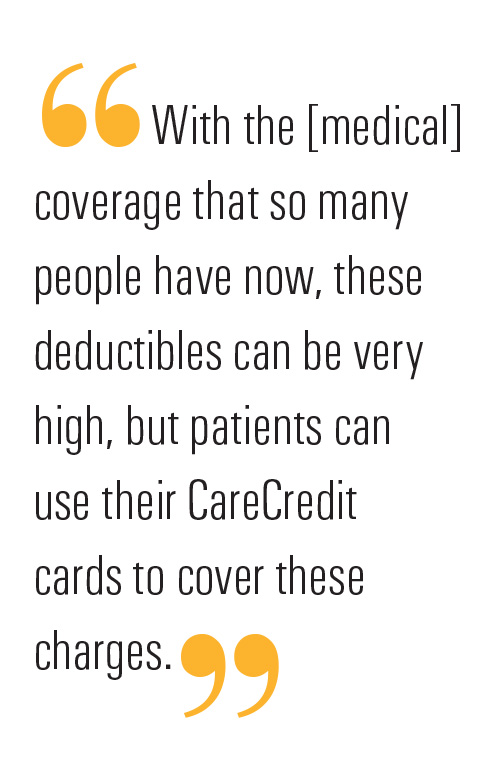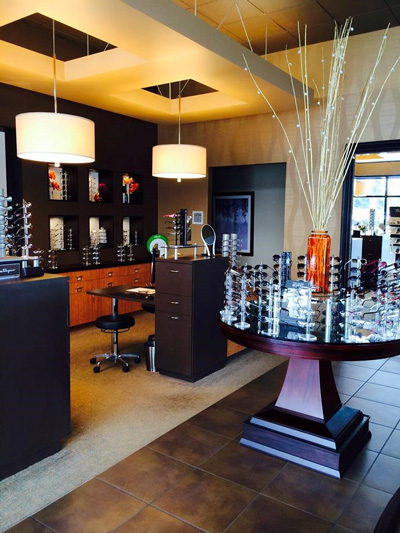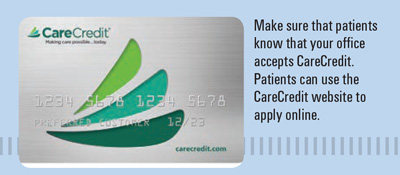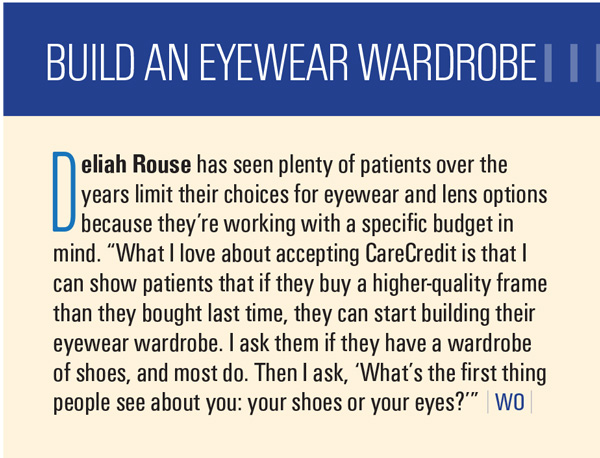

Deliah Rouse, co-owner with her husband of Rouse EyeCare Center in Lacey, Washington, first heard about CareCredit from her own mother, who had seen signage about it in the dentist’s office. As it turns out, that dentist also lives in the neighborhood, so Rouse was able to ask him how accepting CareCredit worked for him. Her husband, Craig Rouse, OD, wasn’t sure that discussions on financing fit with the office culture, but the dentist told him it was the best thing he had ever done for his patients’ convenience and his practice cashflow. With that endorsement, Rouse brought it into the practice, and acceptance and usage of the service has grown steadily over the years.


Many practitioners see the benefits of accepting CareCredit because it allows qualified patients special financing to help them with their optical purchases, she says. But the benefits of CareCredit extend beyond the optical, and in her role managing public relations, Rouse says that accepting CareCredit can help people worry less about a family’s cost of necessary eyewear and eye care. Perhaps because of the perceived costs or the strained budgets at back-to-school time, some families put off children’s exams, she says. “It’s part of my emphasis to educate the community about the importance of annual eye health exams and having a first exam around a baby’s first birthday,” she says.


Through the information available on the practice’s website and the signage on the front door and prominently displayed in other visible areas of the practice, she and the other staff can let patients know that CareCredit can help them budget the expense of medical services as well as any needed eyewear or products.
“Our practice is mainly medical. We offer amniotic membrane placement, advanced testing for glaucoma and dry eye treatment, and Dr. Rouse sees a variety of eye diseases and injuries,” Rouse says. “Those kinds of services are not covered by routine vision coverage, so these visits often count toward patients’ deductibles. With the coverage that so many people have now, these deductibles
can be very high, but patients can use their CareCredit cards to cover these charges.”


With some medical insurances, it can be difficult to determine before the patient comes in how much they’ve paid toward their deductible, which means that these services might be billed to the patient. “When we send out our billings and the charges are about $200 or more, we always include a CareCredit brochure in the envelope,” she says. Patients can apply at home or online and use their CareCredit available financing to pay the practice.


Similarly, the billing coordinator can sit with a patient who has been told that he or she needs more testing or additional services and explain the CareCredit option immediately. It does take the pressure off for qualified patients who learn that there’s an option for monthly payments.
“We never want patients to have to delay or defer treatment or products that can help them right now for financial reasons. If we can treat dry eye sooner, the patient gets relief sooner. If we can fit a child with eyewear as soon as it’s needed, that child has greater opportunities to learn well in school,” she says. “CareCredit helps us to help that patient follow all of the doctor’s treatment protocols and/or eyewear prescriptions.”





